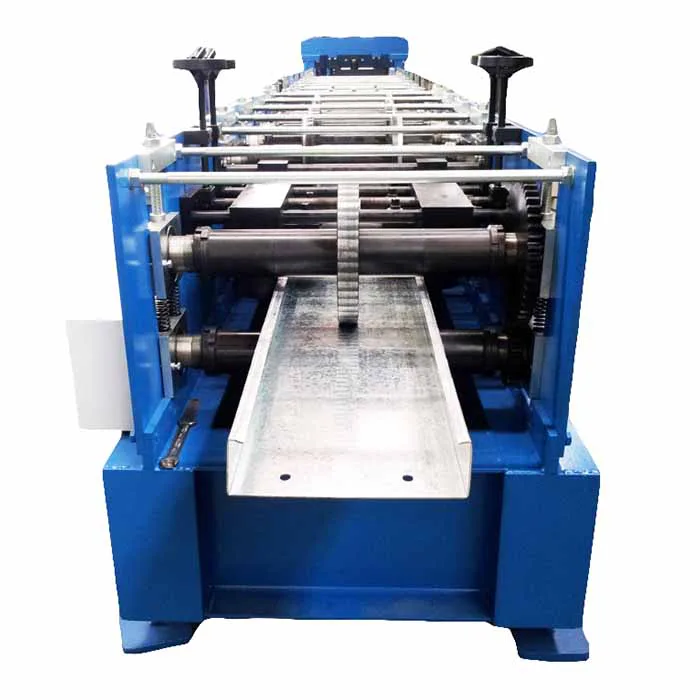
Understanding Different Types of Sheet Press Machines- Hydraulic, Pneumatic, and Mechanical
- By:Metmac
- 2024-05-23
- 214
Sheet press machines are essential tools in various industries, shaping and forming sheet metal into desired shapes. They come in different types based on their operating principles and power sources. This article explores the three main types of sheet press machines: hydraulic, pneumatic, and mechanical, providing insights into their distinct characteristics, advantages, and applications.
Hydraulic Sheet Press Machines
Hydraulic sheet press machines utilize hydraulic fluid as the power transmission medium. They consist of a hydraulic cylinder, piston, and pump. As the fluid is pumped into the cylinder, it exerts pressure on the piston, which in turn transfers the force to the press ram. Hydraulic presses offer several advantages:
– High force capacity: Hydraulic machines can generate immense force, making them suitable for heavy-duty applications.
– Smooth and precise operation: The fluid transmission allows for precise control of pressure and speed, resulting in smooth and accurate pressing.
– Versatile applications: Hydraulic presses are used in a wide range of industries, including automotive, aerospace, and construction.
Pneumatic Sheet Press Machines
Pneumatic sheet press machines utilize compressed air as the power source. They consist of an air cylinder, piston, and control valve. When air is directed into the cylinder, it expands and pushes the piston, which powers the press ram. Pneumatic presses provide several advantages:
– Lightweight and compact: Pneumatic machines are generally lighter and more compact than hydraulic presses, making them ideal for space-constrained environments.
– Rapid operation: Compressed air provides fast actuation, allowing for high-speed pressing operations.
– Low maintenance: Pneumatic systems are relatively low-maintenance, requiring minimal lubrication and fewer moving parts.
Mechanical Sheet Press Machines
Mechanical sheet press machines rely on a mechanical mechanism to generate force. They typically consist of a crankshaft, flywheel, and connecting rods. As the crankshaft rotates, it imparts motion to the flywheel, which stores energy. This energy is then transferred to the connecting rods, which drive the press ram. Mechanical presses offer several advantages:
– High precision: Mechanical presses provide a high level of accuracy and repeatability, ensuring consistent results.
– Robust construction: Mechanical presses are typically robust and durable, able to withstand harsh operating conditions.
– Long lifespan: Mechanical presses have a long lifespan due to their simple design and minimal moving parts.
Choosing the Right Sheet Press Machine
The choice of a sheet press machine depends on the specific application requirements. Here are key factors to consider:
– Force capacity: Determine the required force output to achieve the desired shaping or forming results.
– Operation speed: Consider the cycle time and production rate requirements.
– Accuracy and precision: Assess the tolerance requirements for the pressed parts.
– Versatility: Evaluate the need for a machine capable of handling a range of materials and press shapes.
– Maintenance costs: Consider the ongoing maintenance and repair costs associated with each type of machine.
By understanding the different types of sheet press machines and their advantages, manufacturers can select the optimal solution for their production needs, ensuring efficient and cost-effective metalworking operations.
-
Metal Sheet Forming Machine: The Engine of Modern Fabrication and the METMAC Standard
2025/12/30 -
Laser Cutting Machine for Steel Plate: Precision Redefined for Modern Fabrication
2025/12/30 -
Metal Curving Machine: Shaping Strength with Precision and the Art of METMAC Engineering
2025/12/30 -
Shear Metal Cutting Machine: Precision, Power, and the METMAC Standard
2025/12/30
-
Advanced Sheet Metal Rolling, Laser Cutting, and Folding Machines for Precision Fabrication
2025/10/31 -
High-Performance Sheet Metal Bending and Cutting Machines for Modern Fabrication
2025/10/31 -
High-Quality Sheet Metal Equipment for Sale: Efficient Solutions for Modern Manufacturing
2025/10/31 -
High-Performance Sheet Metal Equipment for Sale: Forming and Shearing Solutions for Modern Fabrication
2025/10/22
-
A Guide to the Latest Innovations in Sheet Metal Folding Machines
2024/11/29 -
Key Features to Consider When Investing in a Sheet Metal Folding Machine
2024/11/28 -
Enhancing Precision with Advanced Sheet Metal Folding Machines
2024/11/27 -
How to Choose the Right Sheet Metal Folding Machine for Your Workshop
2024/11/26







